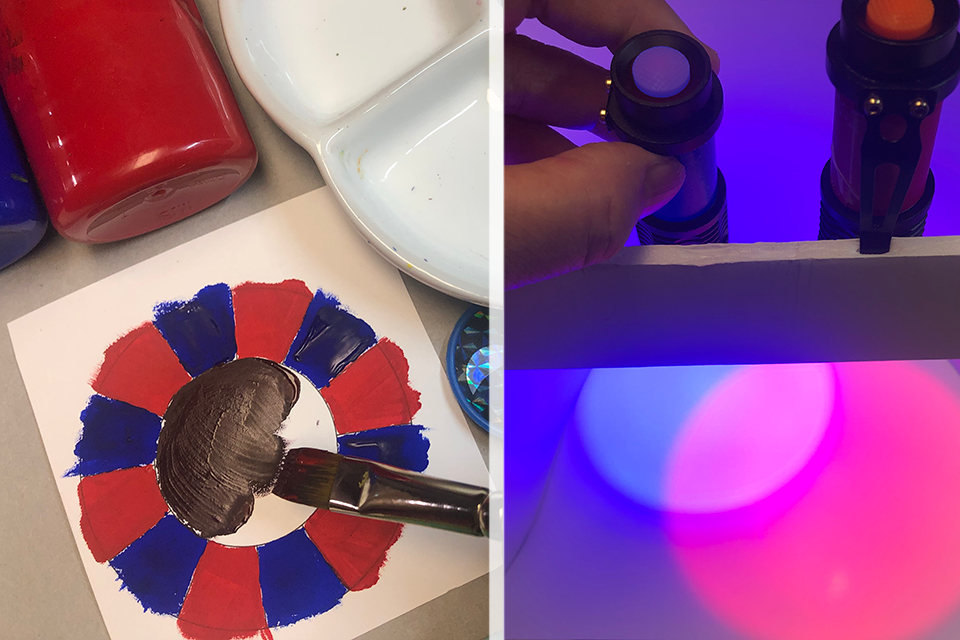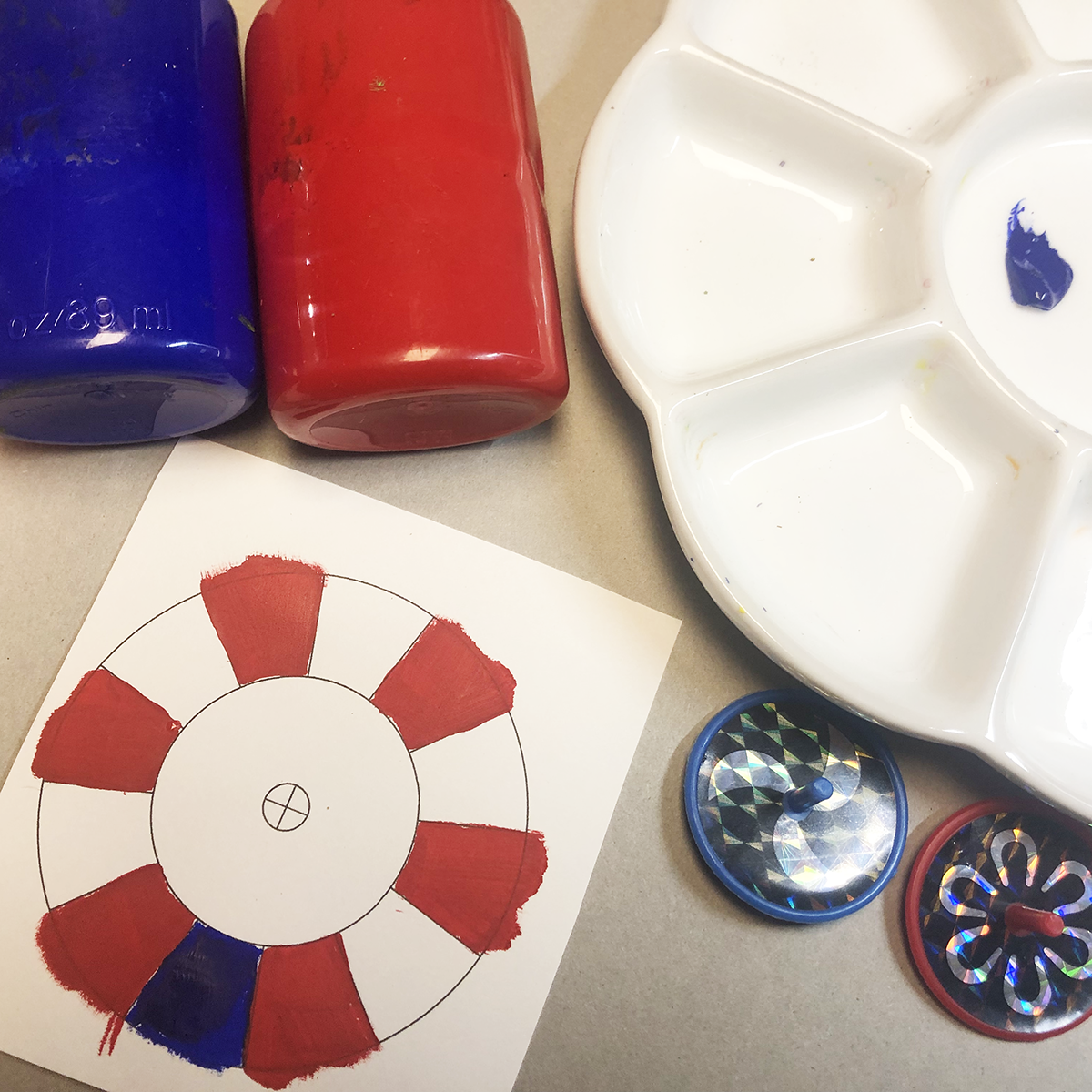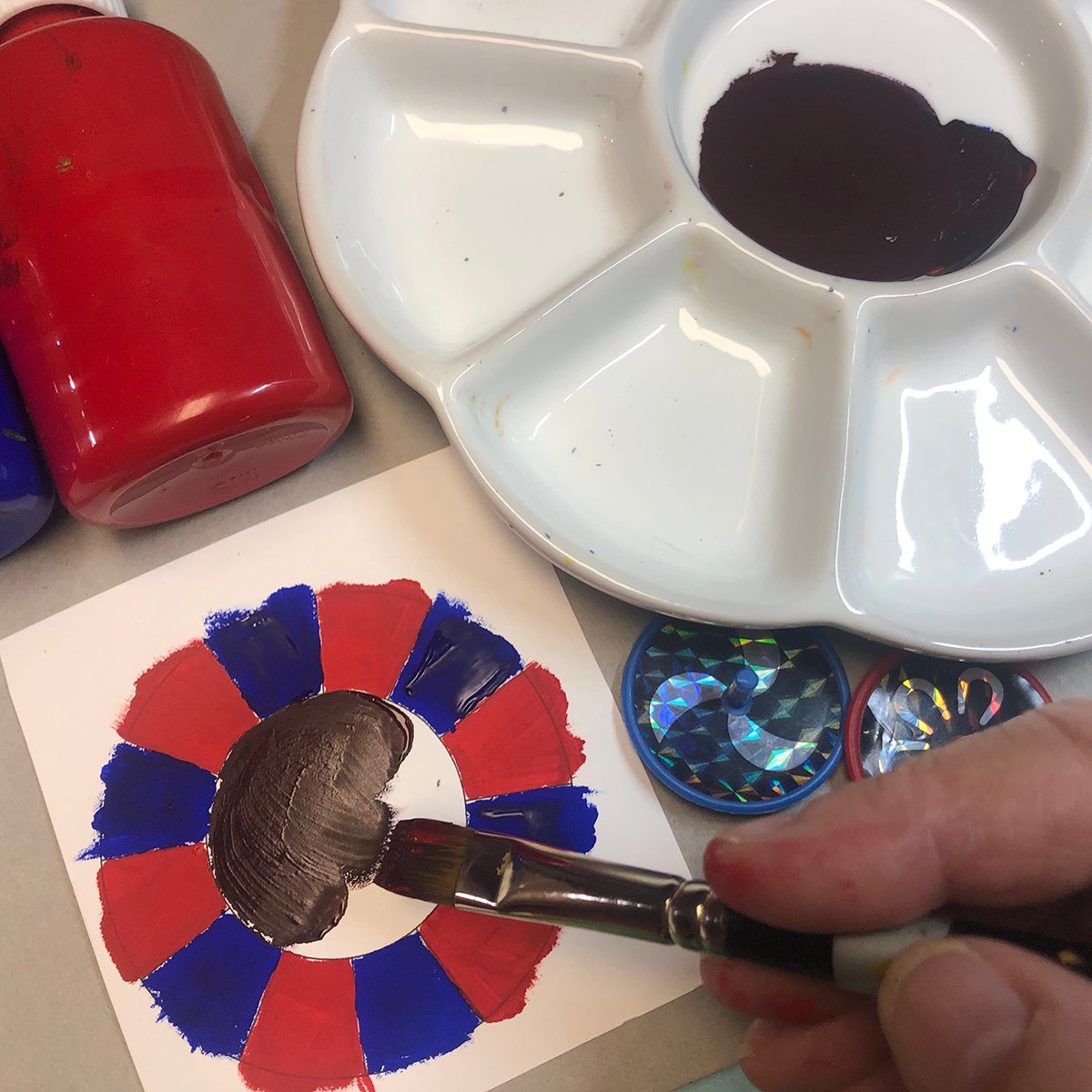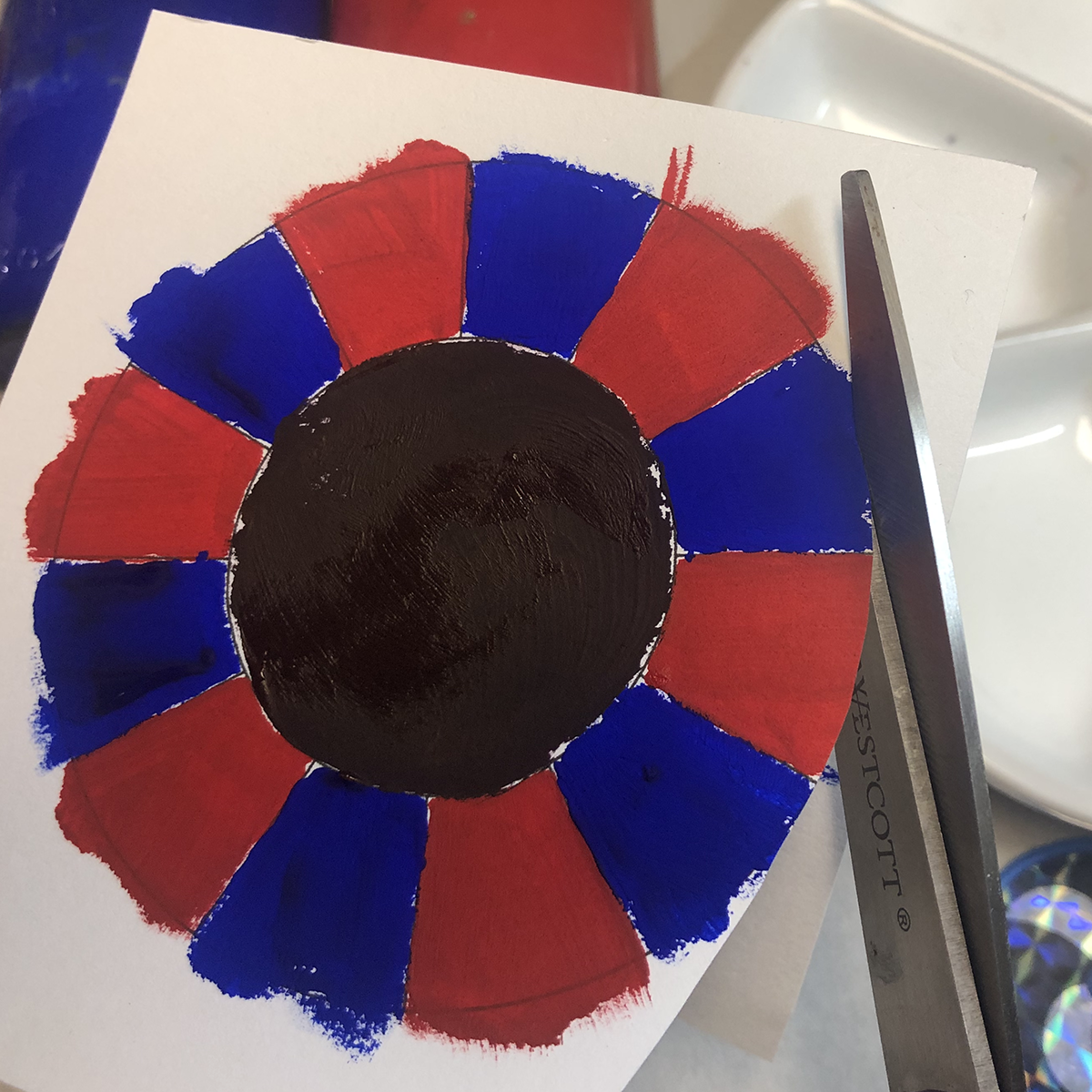Comparative mixing of
blue and red hues
WORKING WITH COLOURS:
Exploring Mixing Processes
Create unexpected mixtures using spinning disks and LEDs!
Details:
Older elementary and up (Younger students would be able to play with completed spinning disks and notice and describe the mixtures. Some may be able to prepare their own disks. All ages can play with the LED flashlights.)
Time: 20 minutes
Learning Outcomes: To compare coloured mixtures produced subtractively by mixing paints (or markers) with optical mixtures using the same paints (or markers). Did any of the red and blue paint mixtures result in vivid Purples? The light mixture and the optical mixture result in colours from the Magenta family.
Colour Concepts: Mixed colours depend on the mixing process used.
Materials:
Spinning disks (Also see More options for making spinning disks)
Spinning disk template (can be copied to sturdier paper)
Download Handout - Spinning disk template
LED flashlights - red and blue
Scissors
Option 1: blue and red coloured markers
Option 2: blue and red coloured acrylic paints, brushes, palette knife, water for cleaning, palette, paper towel (Figure 1)
Instructions:
Choose a blue and red coloured marker, or blue and red paints.
Fill in alternating sections around the outer edge of the circle with blue then red marker/ paint (Figure 2).
Option 1: Mix your blue and red markers in the centre part of the circle, by layering the two colours and mixing with your finger.
Option 2: Mix your blue and red paints in equal amounts on your palette, and paint the centre part of the circle (Figure 3).
Cut out the circle and put it on the disk (Figure 4).
Spin the disk quickly, so that the painted sections of the outer disk blend to a single colour. (If you can still see individual blue and red areas, the disk needs to be spun faster.)
Compare the results of the optical mixture with the subtractive mixture
Compare the results of the painted and spun mixtures with the result of overlapping red and blue LED flashlights.
Figure 1.
Figure 2.
Figure 3.
Figure 4.
Vocabulary:
Questions & observations:
When you spin the disk, is the optically mixed colour (on the outside of the disk) the same as the subtractively mixed colour (on the inside of the disk)?
Is your result surprising?
More to explore:
This exercise has many possibilities for expansion, and could be formatted as a STEAM investigation using the scientific method. In each case, a comparison of the subtractive mixtures vs the optical mixtures can be fully described, using hue family and character.
Possible ways to explore spinning disks:
Mix various blues and reds; notice how small apparent changes of colour impact both subtractive and optical mixtures.
Vary the proportions of the mixture - e.g. 1/2 blue and 1/2 red; 1/3 blue and 2/3 red; 2/3 blue and 1/3 y; etc.
Create mixtures using various media: paints, pastels, pencil crayons, printed inks; coloured papers.
Choose various colour combinations, and numbers of colours to mix.
Vary the lighting source – e.g. outdoor vs. interior lighting.
What’s going on?
This exercise clearly highlights the impact of the specific mixing process used, and the final mixed colour. There is a clear distinction between the ways colorants mix subtractively and the same colorants mix optically.
Mixing colours is a subtractive process which reduces the lightness and chroma. The degree of reduction is dependent on the colourants mixed.
Mixing colorants using spinning disks is a type of temporal additive mixing. In temporal additive mixing, light from sources becomes averaged in lightness when they are moving too rapidly to be distinguished.
Mixing lights using LEDs is an additive process which increases the lightness level of the mixture.
Spinning Surprise!
This process often yields very surprising mixtures, and is an integral component of truly understanding mixing processes. One of the images below shows an optical mixture of yellow and blue, and the other shows an optical mixture of red, white and black. Click on the videos below each image to see how an optical mixture of blue and yellow, and an optical mixture of red, white and black yield very similar results. Did you ever think blue and yellow could mix together and make pink?
Images and videos courtesy Paul Green-Armytage.
Find out more:
See the glossary entry on Additive mixing processes, and a thorough discussion in comparative mixing.









